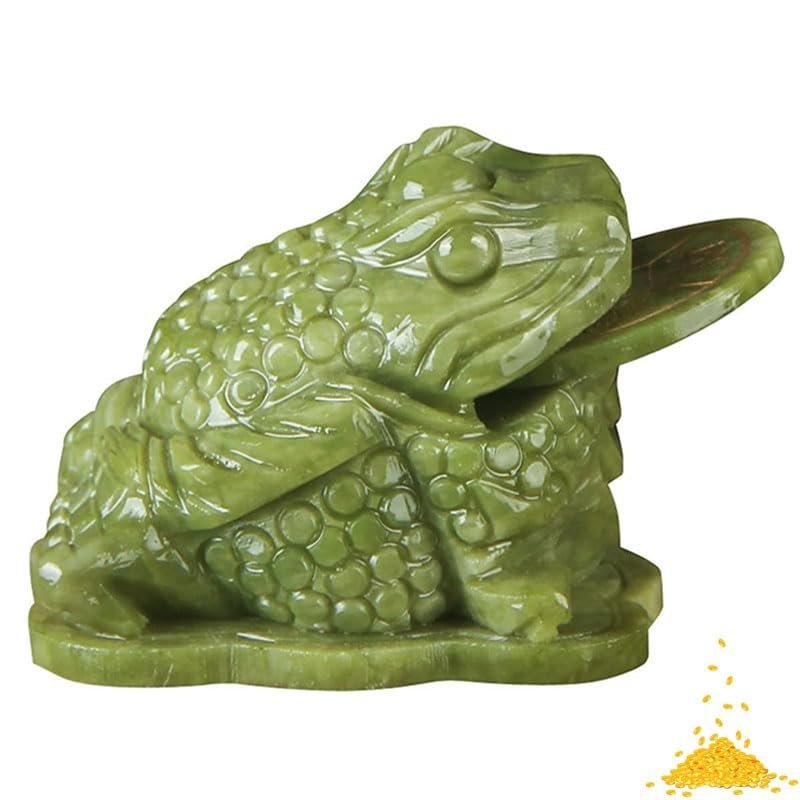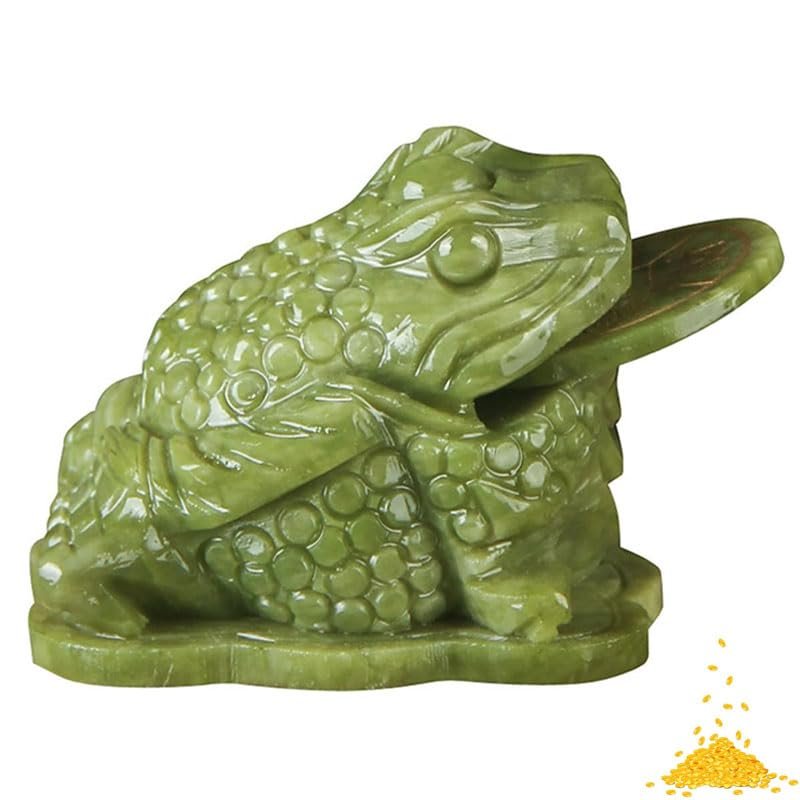Jade is a gemstone that many cultures have cherished for centuries.
It comes in various shades of green, as well as other colors like lavender and white.
Jade is known for its durability and smooth texture.
It’s popular both as a decorative item and as a spiritual symbol in many communities.
Throughout history, jade has been used in everything from jewelry to intricate carvings, showcasing its versatility.
When considering jade pieces, several factors demand attention.
Authenticity is crucial, as the market contains many imitations.
The color and translucency are important quality indicators.
Richer hues and greater clarity are often more desirable.
Knowing the origin of the jade, such as whether it’s nephrite or jadeite, can also provide insight into its value and significance.
In our journey to explore the rich symbolism and significance of jade, we’ll uncover what makes this gemstone so revered and how it embodies both beauty and meaning in various cultures.
Best Jade Products
Jade, a gemstone cherished for centuries, symbolizes wealth and prosperity.
Its rich history and vibrant hues make it a favorite among collectors and spiritual enthusiasts alike.
Let’s explore some of the top jade products available today.
Jade Frog with Coin
This Jade Frog with Coin is a delightful mix of beauty and symbolism, making it a worthy addition to any decor collection seeking prosperity and good fortune.
- Stunning artistry and craftsmanship
- Symbolizes wealth and abundance
- Easy to clean and durable
- Colors may vary due to lighting
- Size may not fit all spaces
- Limited to specific stylistic preferences
Our experience with the Jade Frog with Coin has been quite enchanting.
The intricate design immediately captures attention and adds a touch of elegance wherever it is placed.
Its symbolism is woven into the stunning shape, and the feel of natural jade adds a sense of authenticity and quality.
Despite its allure, it’s important to note that the natural variations in jade can lead to color discrepancies.
This can affect how well it matches existing decor.
The size of this piece also makes it better suited to certain areas, such as a display shelf or a dedicated nook, rather than a central table.
For those interested in the cultural significance, the toad not only stands for prosperity but also is thought to ward off negative energy.
It could be the perfect piece for those who appreciate both aesthetics and deeper meanings in their decorations.
Buying Guide
When we set out to buy jade, it helps to know what makes a piece truly special.
Jade has long been revered for its vibrant green hue and notable toughness.
Color: The most prized shade is a rich, translucent emerald green known as imperial jade.
Let’s remember that jade comes in a range of colors, including yellow, lavender, and white.
Clarity: In jade, some natural cracks or inclusions aren’t uncommon.
Still, it’s best to choose pieces with minimal visible imperfections.
Texture: We should aim for a smooth, fine texture without any noticeable graininess.
The texture significantly affects the overall quality of the jade.
Craftsmanship: The skill of the artisan plays a big role.
Look for pieces with intricate, cleanly executed designs.
Well-crafted items often stand out in their aesthetic appeal and can carry emotional significance.
Here’s a quick checklist for us:
- Color clarity and texture
- Size and shape
- Craftsmanship
Authentication: Since jade is often imitated, ensuring authenticity is key.
We might consider getting our jade authenticated by a specialist.
Testing for features like weight and sound when tapped can sometimes help, but professional checks are recommended.
Price: Prices can vary widely based on type and quality.
We should ensure we’re paying a fair price by comparing with similar items and checking for certification.
Using this guide, finding a jade piece that speaks to us both aesthetically and spiritually becomes a more informed journey.
Frequently Asked Questions
Jade has captivated many cultures with its rich symbolism, often linked to prosperity and abundance.
Let’s explore some common questions about jade and its cultural and historical significance.
What cultural significance does jade hold?
In many Asian cultures, jade represents purity and moral integrity.
In China, it’s seen as a stone of heaven that brings harmony and good fortune.
Indigenous cultures in Central America regard jade as a symbol of life and fertility.
How is jade connected to notions of prosperity and abundance?
Jade is often associated with wealth.
In various cultures, it is believed to attract prosperity.
Many consider it a lucky charm, encouraging financial success.
Jade amulets or carvings are commonly used in both business and personal spaces to promote abundance.
What is the historical symbolism associated with different colors of jade?
Green jade is traditionally linked to growth and vitality.
White jade symbolizes calm and peace.
Yellow jade is associated with wisdom and understanding.
Each color holds unique meanings and values across different cultures.
Which benefits are attributed to wearing jade accessories?
Jade accessories are believed to offer several benefits.
People often wear them to foster tranquility and balance, improve health, and enhance longevity.
Many also claim that jade has soothing properties that calm the mind and spirit.
Are there any beliefs regarding who should or shouldn’t wear jade?
Some believe jade should be gifted rather than purchased for oneself to harness its positive energy fully.
In certain traditions, it’s suggested that individuals experiencing extreme emotions might temporarily avoid wearing jade, as it is thought to absorb energy.
How is jade typically used in practices associated with wealth?
Jade is often crafted into figurines, jewelry, and talismans used in Feng Shui to attract prosperity.
In business, people place jade charms strategically to invite success and stability.
They believe that the stone’s energy can harmonize and activate wealth-attracting forces in an environment.


